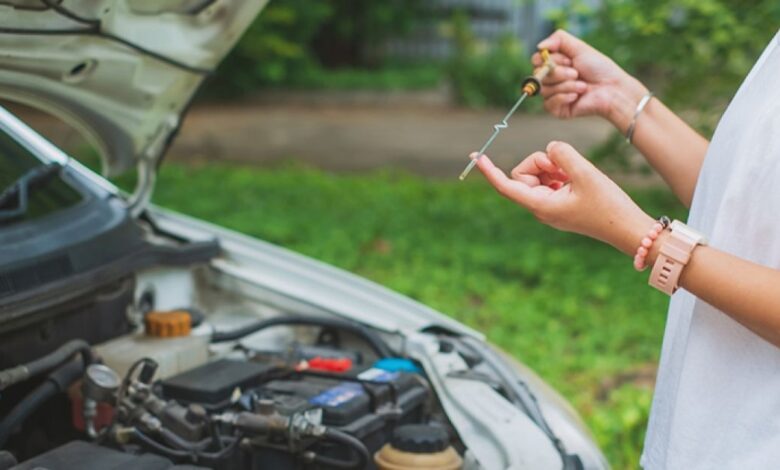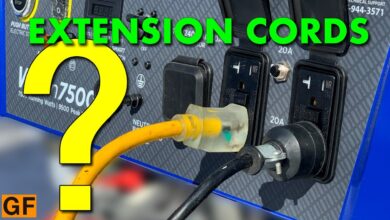DIY Tips for Checking a Vehicle’s Condition Before Taking It to a Professional

A thorough vehicle check before buying is indispensable when contemplating the purchase of a used vehicle. This initial DIY inspection is crucial as it sets the stage for a more detailed examination by a professional if the car passes your preliminary review. In this blog, we’ll dive deeper into the essential steps to assess a vehicle’s condition yourself.
1. Examine the Exterior
Initiating your vehicle check before buying by assessing the exterior is crucial. Inspect the car under natural light to catch any discrepancies in paint, which could indicate past repairs following an accident. Look for signs of rust, especially at the car’s lower edges and wheel arches, which may suggest long-term exposure to moisture and neglect.
While minor dents and scratches are typical and acceptable, significant damage or misaligned body panels can signal severe past accidents or poor repair work. Additionally, ensure all doors, the trunk, and the hood function smoothly and align perfectly with the car’s body, as improper alignment can indicate previous accidents or shoddy repairs.
2. Check the Tires
Tires provide critical clues about a vehicle’s alignment and suspension health. When performing your vehicle check before buying, examine each tyre for even tread wear and adequate tread depth. An easy method is the penny test, where you insert a penny into the tread groove with Lincoln’s head facing down; if you can see the top of Lincoln’s head, the tyres are too worn.
Besides the tread, one should undergo a Mobile Vehicle Inspection in Melbourne for any uneven wear patterns—such as more wear on the inside or outside edges—that might indicate alignment or suspension issues. Additionally, tyre sidewalls should be examined for cracks or bulges, as these can be precursors to tire failures.
3. Look Under the Hood
Before buying, open the hood as part of your vehicle check to examine the engine and related components. Look for any signs of leaks, rust, or wear on rubber components like belts and hoses. Checking the oil is also telling; pull out the dipstick to see if the oil is clear amber, which usually indicates good engine health. If the oil appears black, gritty, or metallic, this could suggest engine wear or overdue oil changes. Also, assess the coolant in the overflow tank—it should be clean and brightly coloured, without any particles or oil mixed in.
4. Inspect the Interior
The interior condition can reflect how well the vehicle has been maintained. During your vehicle check before buying, note any excessive wear on the driver’s seat or steering wheel, which could indicate higher than reported usage or odometer tampering. Ensure all seat adjustments are functional and inspect under floor mats for any signs of dampness or water ingress, which could indicate door or window seals failing. Test all electronic functions, such as the dashboard display, light indicators, and infotainment system, to ensure they operate as expected.
5. Test All Electrical Components
Electrical issues can be among the most challenging and expensive to diagnose and repair. Therefore, a thorough vehicle check should include testing all electrical systems before buying. Ensure the headlights, turn signals, interior lights, and dashboard illumination work correctly. Test the stereo system, navigation (if applicable), and all USB and power ports. Verify that the air conditioning blows cold and the heater functions appropriately, as HVAC issues can also be costly to fix.
6. Review the Vehicle’s History Report
Obtaining a vehicle history report is essential in checking the vehicle before buying. This report can provide valuable insights into the car’s past, such as recorded accidents, flood damage, service history, and previous ownership. Use reputable services like CARFAX or AutoCheck to acquire this report. Carefully compare the report’s details with the seller’s information to identify discrepancies or red flags.
7. Take It for a Test Drive
The final and most crucial part of your vehicle check before buying is taking the car for a test drive. It allows you to assess the vehicle’s mechanical performance and comfort while driving. Listen for unusual engine noises or vibrations, and note how the car handles during turns and braking. Check for any pulling during braking, which can indicate brake issues, and ensure the transmission shifts smoothly without hesitation or noise. This practical test will help you gauge the overall drivability and condition of the car.
8. Verify Fluid Levels and Quality
Checking the vehicle’s fluid levels is crucial to the vehicle check before buying. Check the brake, power steering, and transmission fluid beyond engine oil and coolant. These fluids should be at the proper fill levels and clean, not cloudy or gritty. Dirty or low fluids can indicate poor maintenance, which may lead to more significant mechanical issues. It is a simple yet effective way to gauge how well the vehicle has been maintained.
9. Inspect the Undercarriage
The undercarriage of a vehicle can tell you a lot about its condition and history. During your vehicle check before buying, look underneath the car for any signs of rust or damage, especially to critical components like the frame, exhaust system, and suspension parts. Excessive rust can compromise the structural integrity of the vehicle. Also, look for any fresh oil or fluid leaks, which could indicate current mechanical issues that need immediate attention.
10. Assess the Exhaust System
While the engine is running, check the exhaust for excessive smoke, indicating engine problems. White smoke might suggest a coolant leak into the engine, while blue smoke could mean oil burning, signs of significant issues. Also, during your vehicle check before buying, listen for any unusual noises from the exhaust system that might indicate leaks or damage. This assessment helps ensure the engine’s health and the vehicle meets emissions standards.
Performing a detailed vehicle check before buying can reveal potential issues that might not be obvious at first glance. While these DIY tips help assess the general condition of a used car, remember that some problems can only be diagnosed by a professional mechanic from Ride Check. Therefore, a professional Mobile Vehicle Inspection in Melbourne is advisable for a more comprehensive evaluation if the vehicle passes your initial review. This way, you can ensure your new purchase is safe and reliable, protecting your investment in the long run.



